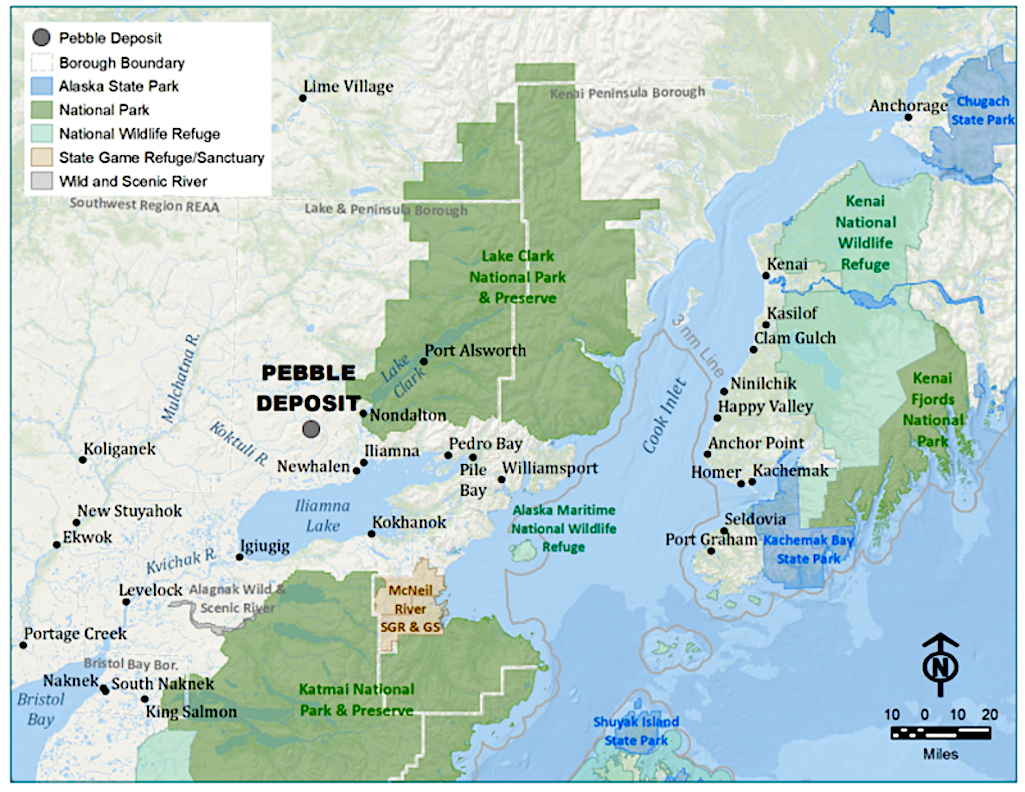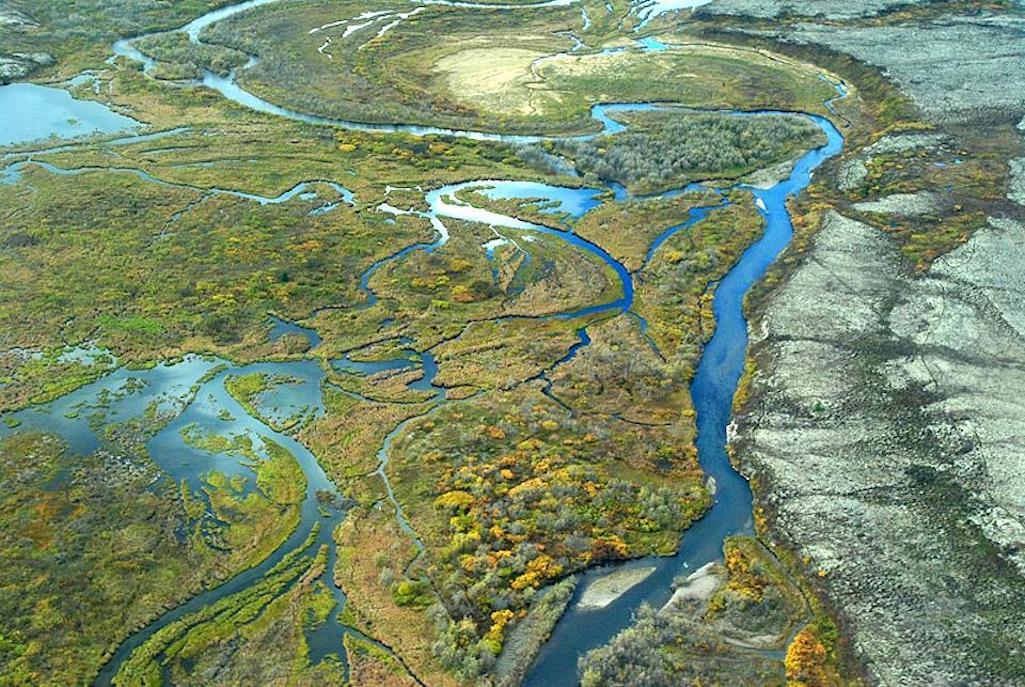
Pebble Mine locator map/USACE
Regional Environmental Protection Agency officials are recommending that the Bristol Bay watershed in Alaska be protected from becoming a disposal site for wastes associated with the proposed Pebble Mine that, if approved, would lie at the headwaters of two of the largest tributaries of Bristol Bay and fall between Lake Clark National Park and Preserve and Katmai National Park and Preserve.
EPA Region 10 officials said they made the recommendation under Section 404(c) of the Clean Water Act because the mine operation would likely imperil the watershed's fisheries.
"Beyond their economic and environmental value, the diverse fishery and other aquatic and terrestrial resources of the Bristol Bay watershed, which depend upon the complex of healthy streams, wetlands, and other waters, are irreplaceable because they are inseparable from the cultures of the native people they support," the region added in its executive summary.
Eyed to be developed just 14 miles beyond the preserve portion of Lake Clark's southwestern boundary, the vision of Pebble has spawned a land rush that since 2003 has seen some 1,000 square miles of state lands adjacent to the park staked with mining claims. The proposed Pebble mine itself would require "an 82-mile road, pipeline and utilities corridor to a permanent, year-round port facility on Cook Inlet, a lightering location in Iniskin Bay, a 164-mile natural gas pipeline from existing energy infrastructure on the Kenai Peninsula to the Pebble mine site, a 270 MW natural gas-fired power plant at the mine site and smaller power generation facility at the port site."

Some of the wetlands in the area of the proposed open-pit mine/EPA
According to the EPA, the Pebble deposit underlies portions of the South Fork Koktuli River (SFK), North Fork Koktuli River (NFK), and Upper Talarik Creek (UTC) watersheds. The SFK, NFK, and UTC drain to two of the largest rivers in the Bristol Bay watershed, the Nushagak and Kvichak rivers.
“EPA did the right thing today. Bristol Bay is the world’s finest salmon fishery. The vast majority of local Alaska Native villages and sportsmen and women across America want to see it protected. Thanks to EPA for applying common sense to a common problem for the common good,” Chris Wood, president and CEO of Trout Unlimited, said after the recommendation was released late last week. “We thank the EPA for their commitment to carrying out the Clean Water Act 404(c) process for Bristol Bay and honoring the wishes of the affected Alaska Native villages. We urge Administrator Regan to finalize the protections for Bristol Bay as soon as possible.”
“We are excited to see this important step happen and won’t let our guards down until these safeguards are across the finish line. It would be fantastic to start 2023 with the final approval of these protections. So many Alaskans, like myself, that depend on Bristol Bay's salmon and clean water, need certainty that the resources that sustain us won't be threatened by incompatible development,” said Brian Kraft, president of the Katmai Service Providers and owner of two Bristol Bay sportfishing lodges.
In 2010, nine federally-recognized Bristol Bay tribes petitioned EPA to use its authority under the Clean Water Act to protect Bristol Bay. After numerous rounds of scientific assessment and review, proposed Clean Water Act protections were released in 2014 by the Obama administration but never finalized. In 2019, the EPA, under the Trump administration, sought to withdraw the 2014 Proposed Determination. Trout Unlimited challenged the EPA’s decision as arbitrary and capricious and contrary to the Clean Water Act’s governing standard in court. In July, 2021, the Ninth Circuit Court of Appeals ruled in favor of TU, finding that the EPA could withdraw a proposed determination only if the discharge of materials would be unlikely to have an “unacceptable adverse effect.”
The EPA recommendation follows by two years a decision by the U.S. Army Corps of Engineers not to issue a crucial permit needed to move the Pebble Mine forward because the mine proposal did not comply with Clean Water Act provisions and was contrary to public interest. According to the Corps, the Pebble project over its life would mine approximately 1,300 million tons of mineralized rock and 150 million tons of waste rock and overburden.
Previous Traveler stories about the Pebble Mine proposal:
EPA Revives Possibility Of Massive Mine Near Lake Clark National Park And Preserve



Add comment